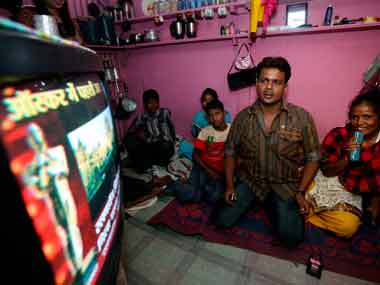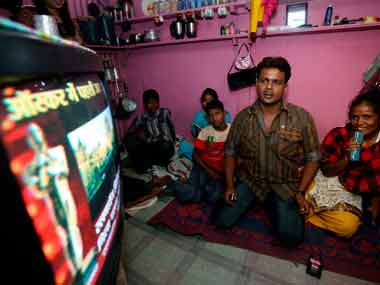Editor’s note: This post has been written by a veteran media professional with over 20 active years in the media and with measurement of media. He chooses not to identify himself - and we respect his decision.
The Mandarins of Shastri Bhavan are back with another piece of regulation, the Policy Guidelines for Television Rating Agencies in India, which address television audience measurement.
(You can see the guidelines here . Firstpost’s comments on the guidelines are here .)
[caption id=“attachment_134334” align=“alignleft” width=“380”]
 Representational image. Reuters[/caption]
Representational image. Reuters[/caption]
And I am reminded of nothing more than the Queen of Hearts from Alice in Wonderland. Remember her? The crazed monarch whose principal occupation appears to be to order executions at the slightest provocation? “Off with his head.” “Off with her head.” “Off with their heads.” Anybody is liable to be dispatched summarily, infraction or not, at her majesty’s whimsy.
I am assuming that you are only reading this because you have some interest in television in India. In particular, you are interested in audience measurement as a buyer or seller of advertising inventory or an intermediary who negotiates on behalf of either. Right now you are anxious about the consequences of the “Policy Guidelines for Television Rating Agencies in India” adopted by the Union Cabinet on 9 January, 2014. You wonder if these “Guidelines” will mean an abrupt break in ratings data less than a month from now.
Stop worrying. Nothing is about to happen.
Rules, in a statutory sense, give effect to laws. The Legislative deliberates and, if it deems fit, approves an Act. The Act thus becomes a part of law. This law is implemented by framing rules that derive their rationale and authority from the Act. To wit, the Income Tax Act, 1961 is implemented vide the Income Tax Rules. The Cable Television Networks (Regulation) Act, 1995 is implemented vide the Cable Television Network Rules. And so on. Eventually, for the rules to actually become enforceable, they must be gazetted under the Gazette of India. For examples, see this , this or this .
Impact Shorts
More ShortsWhat are rules supposed to achieve? They ask law-abiding citizens to comply and give them a set of do’s and don’ts that, if followed scrupulously, ensure that nothing illegal is done. On the other hand, they establish strictures and penalties for those who are caught violating the law. A rule that is not grounded in the law of the land can, at the very worst, result in disapproving tut-tutting, wagging fingers or righteous-sounding reprimands.
The guidelines to the extent they are spelt out in the Press Information Bureau release make no reference to any law or act under which they are being framed. This suggests either that the legislative business that is mandatory to give them teeth is planned for later in the year during a forthcoming session of Parliament or, (good heavens, no!) that the bureaucrats who drafted it have been slipshod and hasty in driving this agenda.
Back to the core issue of the incumbent rating system. The only penalties contemplated in the guidelines are encashment of bank guarantees and withdrawal of registration. The incumbent rating agency has, to the best of my knowledge, not given any bank guarantee thus far and neither does it have a registration that can be withdrawn. What it does have are a number of metered homes that are regularly polled for data, which is then processed and produces measurement statistics published weekly. Which part of this process can the Ministry’s enthusiastic hamsters stop? None, as far as I can see.
Short point: There’s soon going to be egg on someone’s face and that someone isn’t me.
PS. I would love to be proved wrong on this speculation. All said and done, India deserves a good television audience measurement system overseen by a competent Joint Industry Body (JIB) but this ham-handed document (it even gets dates wrong) is not likely to help in the slightest.
)